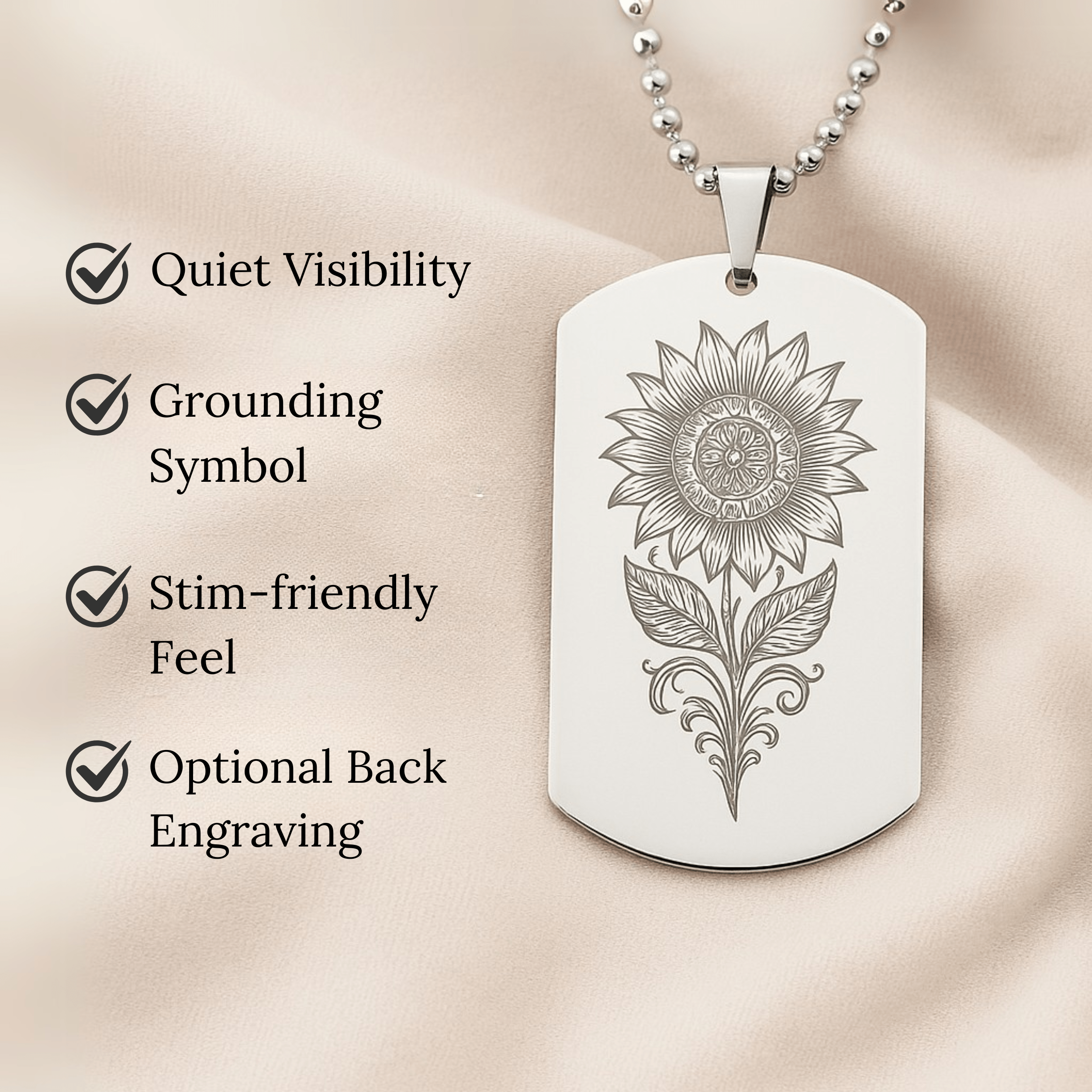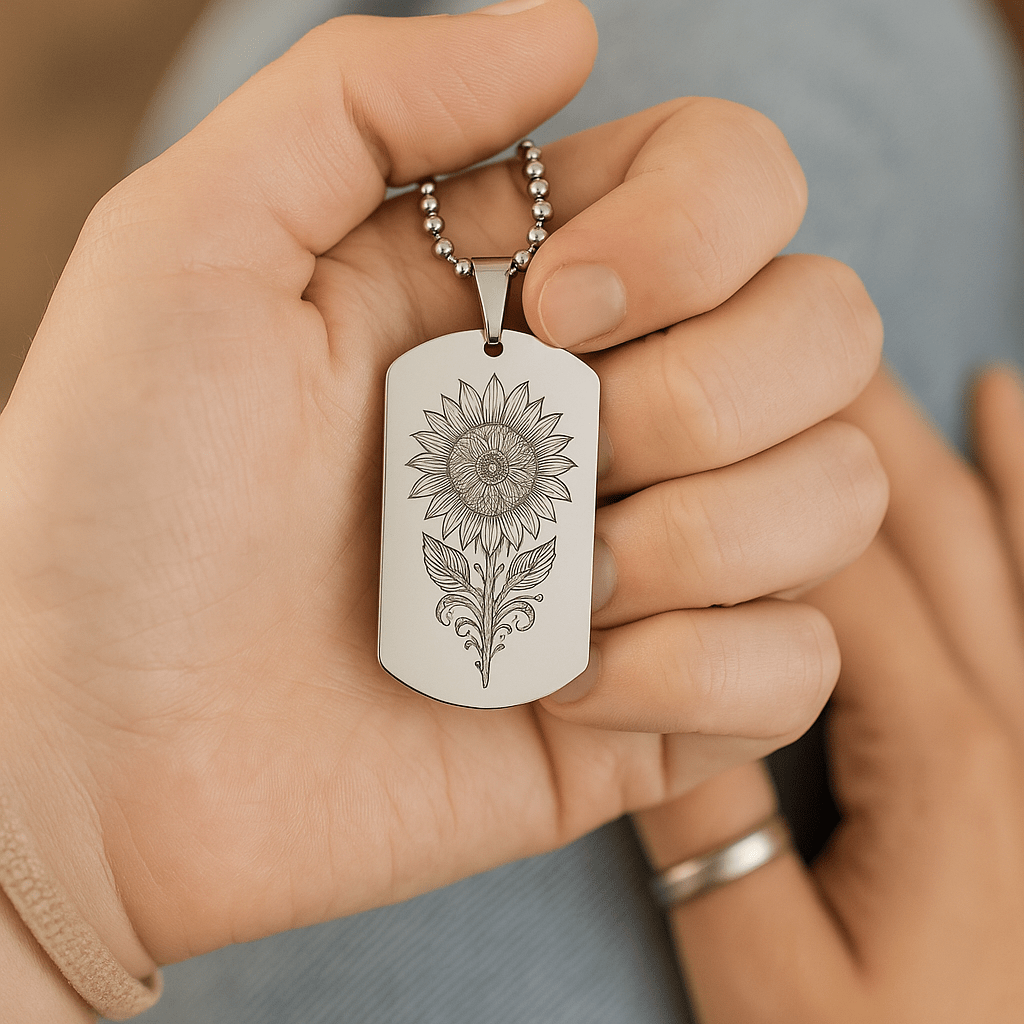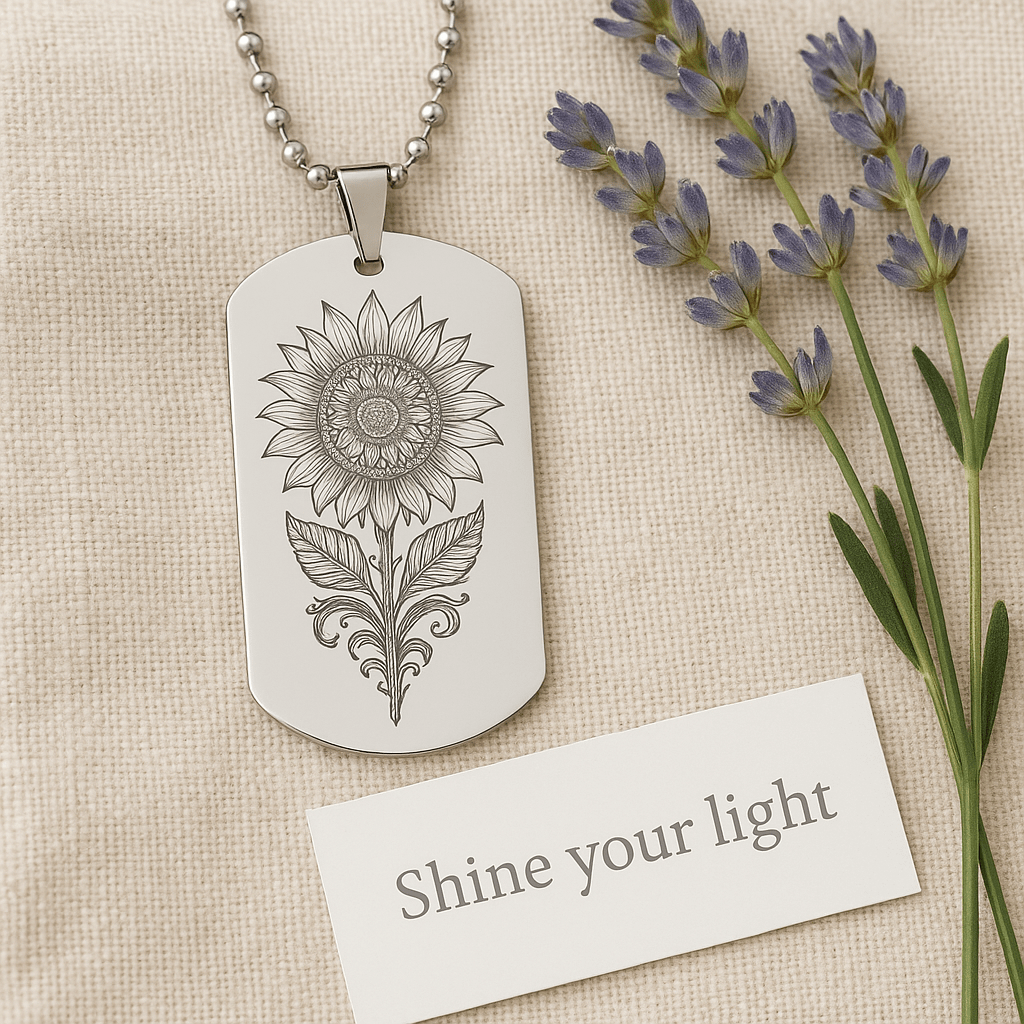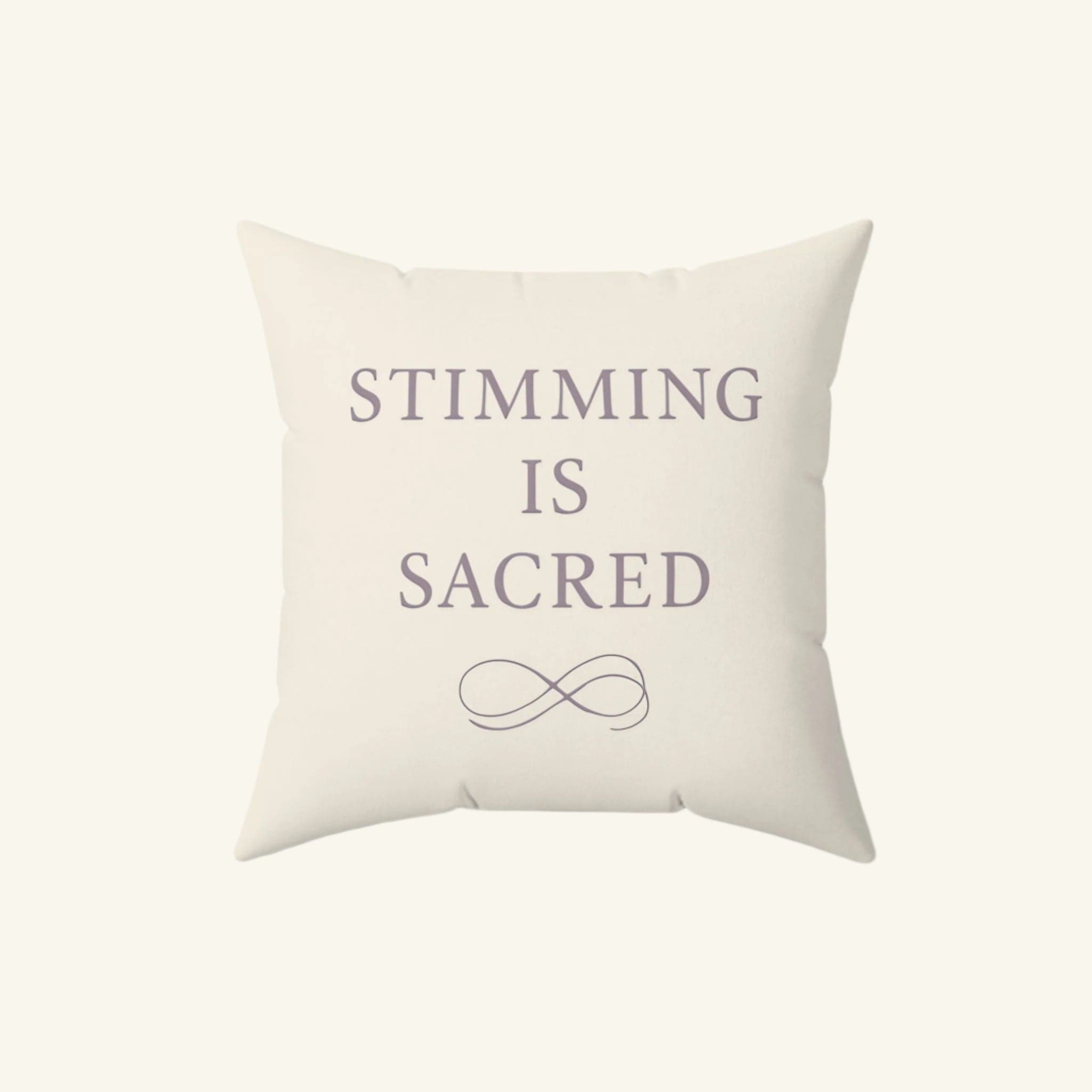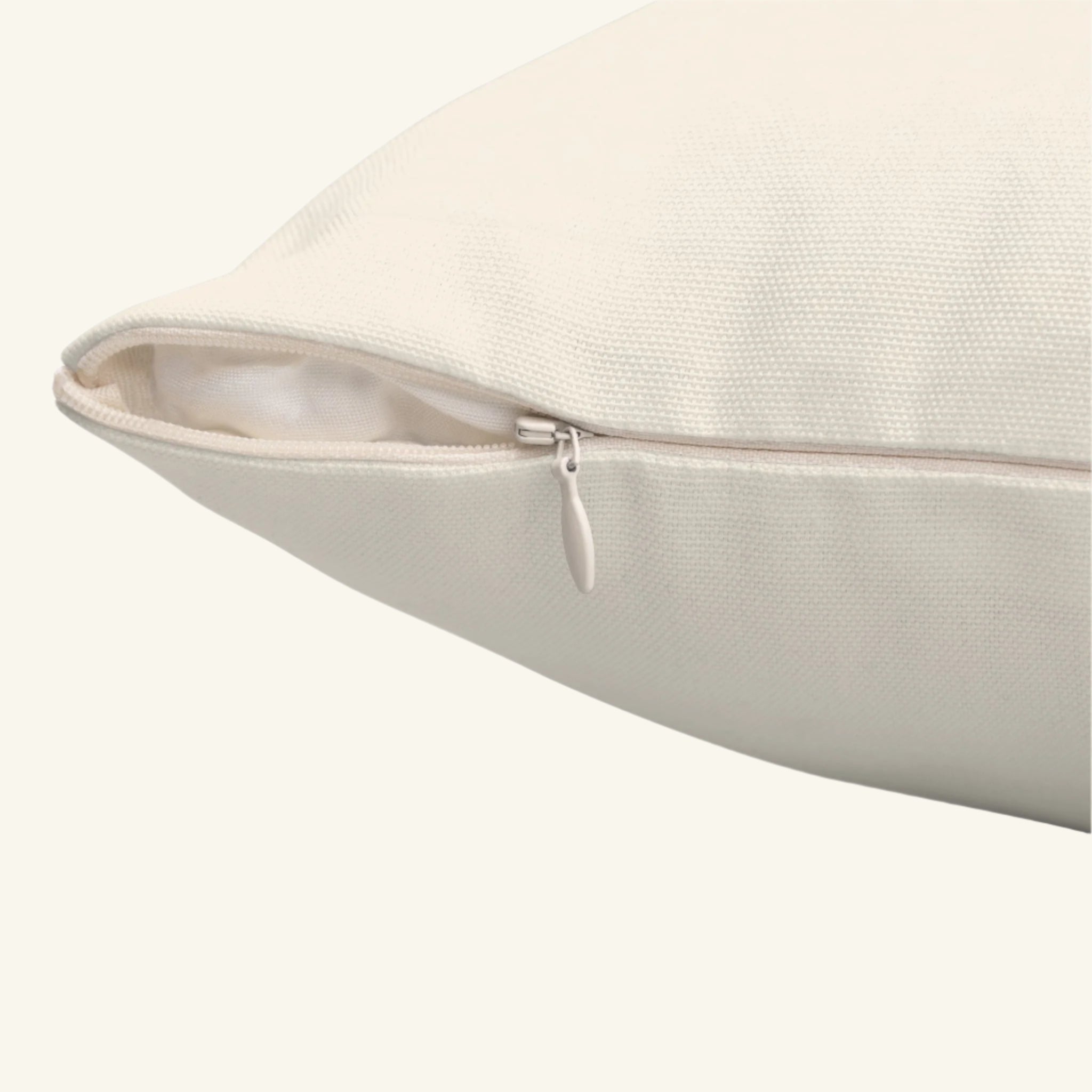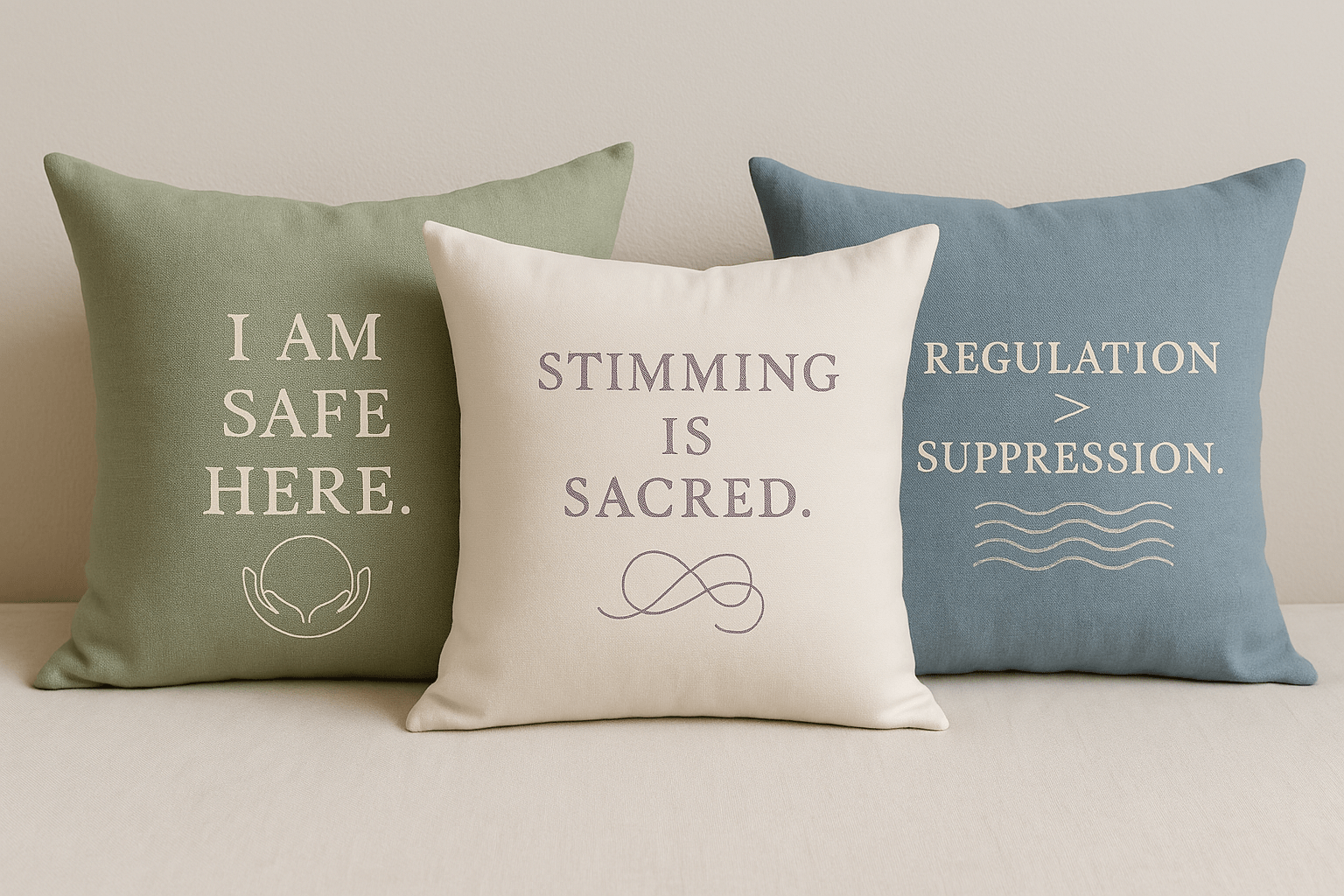Sensory-Friendly Routines and Calming Techniques

Written by HeyASD.com Team
Sensory-friendly routines and calming techniques are essential for individuals with sensory processing challenges. By establishing a structured environment and incorporating specific strategies, it is possible to create a supportive atmosphere that reduces sensory overload and promotes relaxation. This article explores various approaches to crafting sensory-friendly spaces and routines, offering practical advice for those looking to enhance the sensory experience for themselves or others.
Key Takeaways
- Consistent sensory-friendly routines provide security and predictability, incorporating structured activities, sensory breaks, and visual aids for smoother transitions.
- Creating a calming environment involves decluttering, utilizing natural light, controlling noise, and having a designated safe space with comforting items.
- Managing screen time is crucial to prevent sensory overload, requiring a balance between digital and physical activities and monitoring the exposure.
- Responding to sensory overload can be achieved by identifying distressing inputs, employing deep pressure techniques, and teaching calming methods like deep breathing.
- Designing sensory-friendly activities and spaces should cater to individual preferences and triggers, incorporating elements like calming music and visual supports.
Establishing Sensory-Friendly Routines
Creating a Predictable Daily Schedule
A predictable daily schedule is a cornerstone of a sensory-friendly routine. Consistency is key for children with sensory processing challenges, as it provides a sense of security and reduces anxiety. By establishing a routine that includes structured activities and sensory breaks, you can help prevent situations that might lead to sensory overload.
- Use visual schedules or timers to help your child anticipate transitions.
- Include downtime to allow for rest and processing.
- Empower your child by offering choices within the routine.
A visual schedule not only aids in anticipating changes but also boosts independence and self-regulation skills, which are essential for navigating daily activities.
Incorporating visual schedules and timers can make transitions between activities smoother, easing the stress of change. This predictability in their routine helps manage behaviors more effectively, fostering a reassuring environment for your child.
Incorporating Structured Activities and Sensory Breaks
Integrating structured activities and sensory breaks into daily routines can significantly enhance focus and self-regulation for individuals with sensory processing challenges. Schedule regular breaks to include short, sensory-focused intervals that cater to your child's needs. For instance, a few minutes on a mini-trampoline can be a game-changer before starting homework.
Involving your child in the selection of sensory activities ensures they feel heard and increases their willingness to participate. Offer a mix of solo and group activities to maintain a healthy sensory balance. Here's how you can keep it varied:
- Offer movement breaks to regulate energy levels.
- Balance loud and dynamic activities with quieter ones for a sensory ebb and flow.
- Provide options for small group or solo activities for those who may feel overwhelmed in larger settings.
Limiting screen time is also crucial as excessive exposure can lead to sensory overload. Encourage activities that allow for deep breathing, stretching, or the use of sensory tools like fidget toys. Giving your child choices in their activities can empower them and support their sensory needs.
By thoughtfully incorporating structured activities and sensory breaks, you create an environment that respects individual sensory preferences and promotes a sense of calm and control.
Utilizing Visual Schedules and Timers for Smooth Transitions
Visual schedules and timers are not just tools; they're the bridge to confidence for children with sensory sensitivities. By offering choices through these visual aids, you empower your child, enhancing their ability to manage transitions and daily activities with greater independence.
Visual schedules serve as a clear roadmap, outlining the day's events and reducing anxiety about the unknown. Timers complement these schedules by providing a tangible countdown, helping children prepare mentally for the next activity. This combination is particularly effective in easing the stress associated with change.
When used consistently, visual schedules and timers can transform chaotic transitions into smooth sailing experiences.
Here's a simple guide to implementing these tools effectively:
- Introduce the visual schedule at the start of the day to set expectations.
- Use timers to signal a warning before transitions, allowing time for mental preparation.
- Encourage your child to check the schedule regularly to foster a sense of control and predictability.
Predictability is a cornerstone of a sensory-friendly routine. It minimizes anxiety and sensory meltdowns, making each day more navigable for your child.
Designing a Calming Environment
Selecting Calming Colors and Comforting Textures
Creating a sensory-friendly environment is crucial for individuals who are sensitive to their surroundings. Choosing the right colors and textures can significantly impact one's sense of calm and security. Soft, neutral colors are often recommended as they tend to be less stimulating than bright or bold hues. When selecting textures, aim for materials that are pleasant to touch and can provide comfort, such as cotton, velvet, or fleece.
Incorporating elements that cater to personal preferences is key. For some, a sensory wall adorned with various textures can offer a tactile experience that soothes and engages. Others might find solace in the simplicity of a minimalist design. Here's a quick guide to creating a comforting space:
- Utilize soft, instrumental music to set a tranquil tone.
- Choose dimmable or colored lighting to accommodate different moods.
- Provide a variety of seating options, from bean bags to hammocks, for ultimate comfort.
- Ensure the space is insulated from outside noise for a truly quiet environment.
Tailoring the space to individual needs and preferences is essential. It's not just about aesthetics; it's about creating a personal haven that promotes relaxation and sensory balance.
Remember to consider the overall sensory impact of the room. Minimizing clutter and visual distractions can help prevent sensory overload, making the environment more manageable and enjoyable.
Controlling Noise and Utilizing Natural Light
Harnessing the tranquility of natural light can transform a space into a sensory-friendly haven. Natural sunlight, as opposed to the harsh glare of fluorescent bulbs, offers a soothing alternative that can help prevent sensory overload. Blackout curtains are a great addition for those who prefer a more subdued environment, allowing for the modulation of light to create a serene atmosphere.
Controlling noise is just as crucial. It's not about enforcing silence but about finding the right balance. Soft, ambient sounds, like a gentle fan or a white noise machine, can provide a comforting background noise that helps to minimize auditory stress. When it comes to decor, simplicity reigns supreme. Choose solid, neutral colors over bright, bold patterns to reduce visual stimuli and create a calming space.
- Create a designated quiet zone for a break from noise
- Use adjustable lighting to control brightness
- Opt for neutral decor to minimize visual stimuli
A calming environment is key to alleviating sensory overload. It's about striking the right balance between light and sound, ensuring the space is tailored to individual needs.
Decluttering and Creating Designated Safe Spaces
In the quest for a sensory-friendly home, decluttering is key. A clutter-free environment reduces cognitive overload, making it easier to focus and stay calm. Start by removing non-essential items and organizing what's left in a way that feels orderly and predictable.
Designated safe spaces are essential for those moments of sensory overload. These areas should be equipped with comforting items such as weighted blankets, soft pillows, and favorite books. They provide a retreat, offering a controlled environment where one can decompress away from sensory stressors.
- Quiet Time: Ensure the safe space has a calming atmosphere, conducive to relaxation.
- A Safe Space: It should be a designated area, clearly identifiable as a retreat zone.
- Visual Supports: Incorporate calming images or elements that provide a sense of security.
Creating a sensory-safe space isn't just about removing stimuli; it's about crafting an environment that supports sensory needs and promotes a sense of well-being.
Managing Screen Time
Establishing Healthy Screen Time Limits
In the digital age, screens are ubiquitous, making it crucial to establish healthy screen time limits to maintain sensory balance. Excessive screen time can lead to sensory overload, particularly for individuals with sensory processing sensitivities. By setting clear boundaries, you can help prevent overstimulation and promote a more harmonious daily routine.
- Limit daily screen time based on age and individual needs.
- Encourage breaks every 20-30 minutes to reduce eye strain and rest the mind.
- Prioritize screen-free activities to ensure a diverse sensory experience.
Creating a balance between digital and physical activities is essential for sensory health.
Remember, the goal is not to eliminate screen time but to integrate it in a way that supports overall well-being. Sensory breaks, such as deep breathing or stretching, can be interspersed with screen use to provide necessary pauses. Offering choices empowers individuals to take control of their sensory environment, fostering independence and self-regulation.
Balancing Digital and Physical Activities
In the digital age, it's crucial to strike a balance between screen time and physical activities, especially for individuals with sensory sensitivities. Creating a harmonious blend of digital and physical experiences can lead to a more rounded daily routine. Physical activities, such as yoga or dance, trigger pleasure responses in the brain, releasing hormones that promote happiness and relaxation.
- Incorporate a mix of sensory-friendly activities* that cater to different preferences. For example, tactile play with various textures or proprioceptive input like pushing heavy objects can be interspersed with digital learning tools or creative apps. This approach not only keeps the routine varied but also ensures that sensory needs are met in a holistic manner.
By thoughtfully alternating between digital content and engaging physical activities, we can foster an environment that supports sensory balance and overall well-being.
Here are some ideas to inspire a balanced routine:
- Use natural lighting and create shaded areas for outdoor activities.
- Designate quiet zones for times when a sensory break from digital stimuli is needed.
- Plan activities that involve movement, such as obstacle courses or balance challenges, to complement sedentary screen time.
Monitoring and Adjusting Screen Exposure
In the digital age, screens are ubiquitous, making it crucial to monitor and adjust screen exposure for sensory balance. Excessive screen time can lead to sensory overload, particularly for individuals with heightened sensitivities. Establishing healthy screen time limits is a proactive step in preventing overstimulation.
- Limit Screen Time: Aim for a balanced daily routine that includes ample time away from screens.
- Provide Sensory Breaks: Integrate regular breaks for activities that engage other senses, like tactile or auditory stimulation.
- Offer Choices: Empower individuals by allowing them to choose screen-free activities they enjoy.
Creating a sensory-friendly environment extends beyond screen time. Consider the lighting in your space; natural light is often more soothing than artificial. Blackout curtains can also be used to create a serene atmosphere when needed.
Adjusting screen exposure isn't just about reducing time spent on devices; it's about creating a harmonious sensory environment. By tailoring screen use to individual needs and preferences, we can foster a setting that supports sensory health and overall well-being.
Responding to Sensory Overload
Identifying and Reducing Distressing Sensory Input
To mitigate sensory overload, it's crucial to identify and minimize the distressing stimuli. This involves creating an environment that reduces overwhelming sensory input, such as loud noises or bright lights. Here are some practical steps:
- Remove the Source: Turn down loud music, dim bright lights, or move to a quieter space.
- Use Deep Pressure: Employ firm hugs, weighted blankets, or gentle compression to calm the nervous system.
- Encourage Calming Techniques: Teach deep breathing, visualization, or progressive muscle relaxation.
A calming environment can alleviate sensory overload. Decluttering, utilizing natural light, and providing a designated safe space with comfort items can make a significant difference.
Creating a sensory-safe space involves not just removing triggers but also equipping the environment with tools that promote self-regulation. Incorporate items like bean bags, textured mats, and stress balls to help manage sensory challenges. By tailoring your approach to the individual's needs, you can significantly reduce distress and discomfort.
Employing Deep Pressure Techniques
Deep pressure techniques offer a sanctuary of calm for those with sensory sensitivities. Weighted blankets or vests apply a comforting embrace, mimicking the security of a hug. This proprioceptive input is like a signal to the nervous system, encouraging relaxation and a sense of safety.
- Experiment with different deep pressure methods to find what resonates with your child. Gentle massage, therapeutic brushing, or even firm hugs can be part of your toolkit.
- Consider the environment: a quiet space can enhance the effectiveness of these techniques.
- Always seek consent before applying deep pressure, respecting personal boundaries and comfort levels.
Deep pressure isn't just about the physical touch; it's about providing a reliable retreat for the senses, a consistent method to dial down the noise of the world.
Remember, the goal is to alleviate the intensity of sensory overloads, creating moments of peace in a bustling world. Incorporating calming music or mindful activities can complement the soothing effects of deep pressure, crafting a holistic approach to sensory regulation.
Teaching Simple Calming Techniques
Introducing simple calming techniques to individuals with sensory sensitivities can be a game-changer. Deep breathing exercises are a cornerstone of self-soothing, allowing for immediate stress relief. Encourage the practice of inhaling deeply through the nose, holding for a moment, and exhaling slowly through the mouth.
Progressive muscle relaxation is another effective method. It involves tensing and then relaxing different muscle groups, promoting a sense of physical and mental release. Visualization, where one imagines a peaceful scene or experience, can also transport the mind away from sensory overload.
Sensory activities tailored to personal preferences can provide a comforting distraction and help regain a sense of equilibrium.
Incorporating these techniques into daily life can empower individuals to manage their stress levels and maintain a sense of calm. Here's a simple list to get started:
- Identify and reduce distressing sensory input
- Utilize deep pressure techniques like firm hugs or weighted blankets
- Practice deep breathing and visualization
Remember, creating a personalized toolkit of calming strategies is essential, as each person's sensory needs are unique. Explore and find what works best, whether it's a specific texture, a calming color, or a particular sensory activity.
Planning Sensory-Friendly Activities
Catering to Different Sensory Preferences
Creating an inclusive environment means acknowledging and accommodating the diverse sensory needs of individuals. Offering a variety of activities that cater to different sensory preferences is crucial for engagement and comfort. For instance, some may prefer the calm of a quiet reading nook, while others might thrive in a vibrant craft corner.
Autism-themed wall art, decor, apparel, and accessories are available to express creativity and awareness, enhancing the sensory experience. These items can be found at your local autism store, providing a unique touch to any sensory-friendly space. Free shipping over $49 makes it easy to shop for unique products that resonate with individuals' preferences.
By designing activities and spaces that allow for both stimulation and relaxation, we create a symphony of experiences that can be tailored to individual needs.
Remember to include options for both group and solo activities. This ensures that those who may find large groups overwhelming can still participate in a way that feels comfortable for them. Here's a simple breakdown of sensory-friendly activity ideas:
- Visual: Incorporate both visually-rich and visually-reduced zones.
- Auditory: Set up calming music stations and quiet zones.
- Tactile: Offer a range of textures and materials for hands-on exploration.
Creating Visually-Rich and Visually-Reduced Zones
Designing spaces that cater to different sensory needs is crucial for inclusivity. Visually-rich zones stimulate creativity and engagement, featuring elements like Autism-themed wall art and interactive displays. Conversely, visually-reduced zones aim to reduce visual distractions, offering a respite for those who may feel overwhelmed by too much visual input.
- Visually-rich areas can include colorful decor, textured surfaces, and dynamic lighting.
- Visually-reduced zones should have muted colors, minimal patterns, and soft, consistent lighting.
Adjusting the visual elements of a space can significantly impact comfort and concentration. It's about finding the right balance to support diverse sensory needs.
Creating these zones doesn't have to be complex. Start by assessing the existing environment and then make adjustments to accommodate both ends of the visual spectrum. Remember, the goal is to provide a harmonious environment that everyone can enjoy.
Incorporating Calming Music and Quiet Zones
In the bustling rhythm of daily life, a quiet zone can be a sanctuary for those sensitive to sensory overload. Designate a secluded area in your home or venue, ensuring it's insulated from outside noise and crowds. This space should embody tranquility with soft lighting and comfortable seating options like bean bags or cushions.
- Soothing Music: Introduce soft, instrumental music to foster a serene atmosphere.
- Adjustable Lighting: Utilize dimmers or colored lights to cater to individual comfort levels.
- Safe and Secure: Confirm that the area is equipped with safe, secure, and ample room for movement.
In crafting these quiet zones, remember to minimize overwhelming stimuli, such as bright lights or loud noises, by using softer lighting and providing options for sound control.
Creating a music corner with a variety of calming sounds can also aid in self-regulation. From classical melodies to natural soundscapes, the auditory environment should be tailored to support relaxation and focus.
Techniques to Assist During Sensory Overload
Facilitating Quiet Time and Calm Environments
In the hustle and bustle of daily life, facilitating quiet time is essential for sensory regulation. Designating a Quiet Space in your home can be a sanctuary for those who need to escape sensory overload. This area should be equipped with soft lighting and comfortable seating, creating an oasis of tranquility.
Visual Supports play a crucial role in maintaining a calm environment. They provide a predictable and reassuring presence that can help individuals feel grounded when their senses feel overwhelmed.
- Soft, instrumental music can serve as a soothing backdrop.
- Dimmable or colored lights allow for personalized comfort.
- A variety of seating options cater to individual relaxation needs.
Ensuring the quiet space is insulated from outside noise and visual distractions maximizes its effectiveness as a retreat.
Creating a calm environment isn't just about reducing noise; it's about crafting a sensory experience that respects individual needs and preferences. From the strategic placement of Autism-themed wall art to the careful selection of textures, every detail contributes to a serene atmosphere.
Designating Safe Areas for Retreat
In the midst of a bustling world, designating safe areas for retreat is essential for those with sensory sensitivities. These havens provide a necessary escape from overwhelming environments, allowing for a moment of tranquility and self-regulation.
- Quiet Time: A low-stimulation zone for relaxation, not necessarily silent but peaceful enough to offer respite.
- A Safe Space: A dedicated area, shielded from bright lights and loud noises, where one can retreat during sensory overload.
- Visual Supports: Calming images or schedules in the retreat area can anchor and soothe the senses.
Creating a personalized retreat space is not just about isolation; it's about crafting a sanctuary that resonates with the individual's unique sensory needs.
By understanding and catering to these needs, we can foster environments that not only prevent sensory overload but also promote creativity and awareness. For those looking to enhance their sensory-friendly spaces, consider exploring Autism-themed wall art, apparel, and decor. With options like jigsaw puzzles and journals, these items can add a personal touch to any safe retreat area.
Using Visual Supports to Ground Overloaded Senses
When sensory overload strikes, visual supports can be a lifeline. They anchor the senses, providing a focus point to help regain control. Visual stimming, a common self-regulation technique, involves repetitive gazing at certain patterns or objects to soothe the mind.
- Use simple, non-distracting images or objects as focal points.
- Introduce visual schedules or charts to predict and prepare for upcoming activities.
- Employ color coding to differentiate between calming and alerting stimuli.
Visual supports not only assist in managing sensory overload but also empower individuals to navigate their environment with greater confidence.
Creating a visual toolbox can be a game-changer for those with sensory sensitivities. It's about finding what visually grounds each person, be it a calming blue swirl or a mesmerizing geometric pattern. Tailoring these tools to personal triggers ensures a quick and effective response when overwhelmed.
Creating a Sensory-Safe Space at Home
Choosing Calming Colors and Soft Lighting
The ambiance of a room can significantly influence one's sensory experience. Choosing calming colors and soft lighting is essential for creating a sensory-safe space. Soft, pastel hues or neutral tones can provide a soothing backdrop, reducing visual clutter and potential stressors.
In terms of lighting, natural light is the gold standard, fostering a serene atmosphere. However, when natural light isn't an option, soft artificial lighting can be a viable alternative. Dimmable LED lights or lamps with colored bulbs allow for customization to fit individual needs and preferences.
The right lighting can transform a space from overwhelming to tranquil, making it a haven for those with sensory sensitivities.
Consider these points when designing your sensory-friendly space:
- Utilize natural light whenever possible to create a calming effect.
- Install dimmable or colored lighting options for flexibility.
- Select paint and decor in soothing colors to minimize sensory overload.
Remember, the goal is to create an environment that feels safe and comfortable, allowing for relaxation and sensory regulation.
Including Comfort Items for Deep-Pressure Stimulation
Deep-pressure stimulation is a cornerstone of creating a sensory-safe space. Weighted blankets and vests apply gentle, firm pressure, akin to a reassuring hug, promoting a sense of security and calm. These items can be pivotal in managing sensory overload, offering a non-invasive method to help soothe and regulate the nervous system.
Deep pressure massage and therapeutic brushing are hands-on techniques that provide similar benefits. They can be especially helpful for individuals who experience heightened sensitivity to touch or those who exhibit restlessness. It's essential to tailor these methods to the individual's comfort level, ensuring a positive and calming experience.
- Weighted blankets: Provide full-body pressure
- Weighted vests: Offer portable pressure
- Deep pressure massage: Delivers targeted, hands-on relief
- Therapeutic brushing: Aids in sensory regulation
Creating a personalized sensory toolbox with these items can empower individuals to self-regulate during times of stress, enhancing their ability to cope with sensory challenges.
Minimizing Clutter for a Simplified Environment
A simplified environment is key to creating a sensory-friendly space. Regular cleaning and decluttering are essential to maintain a setting that minimizes distractions and cognitive overload. A cluttered room not only distracts but can also be a sensory pitfall, leading to discomfort and stress.
- Minimize Clutter and Visual Distractions: Keep your space tidy and free from unnecessary visual stimuli. This helps in reducing sensory overload and creates a more soothing environment.
- Incorporate Sensory Tools: Sensory-friendly items like bean bags, textured mats, and stress balls can be strategically placed to aid in self-regulation and provide tactile exploration.
A calming environment can alleviate sensory overload. Achieving this involves decluttering, utilizing natural light, and selecting neutral decor.
By designing a space with minimal visual distractions, you create an atmosphere that supports focus and tranquility. It's not just about removing items, but also about choosing decor that is soothing rather than stimulating. The goal is to foster a sense of security and tranquility for individuals who may be easily overwhelmed by their surroundings.
Utilizing Sensory Tools
Offering Fidget Toys and Noise-Canceling Headphones
In the quest for tranquility, fidget toys and noise-canceling headphones stand out as essential tools for individuals seeking sensory relief. These items are not just gadgets; they're lifelines for those who need to filter out the chaos and focus on the moment.
- Fidget toys come in various forms, from spinners to squishy stress balls, each offering a unique tactile experience to ground and calm the user.
- Noise-canceling headphones provide an auditory sanctuary, allowing wearers to escape into silence or their chosen soundscape.
By integrating these tools into daily life, one can create a personal oasis of calm amidst the sensory storm.
It's important to tailor the selection to the individual's preferences. For some, the rhythmic motion of a fidget spinner brings a sense of peace, while others may find solace in the weight of a stress ball. Similarly, the type of noise-canceling headphones can make a significant difference—some may prefer over-ear designs for complete immersion, while others opt for in-ear models for comfort.
When considering these sensory aids, it's beneficial to explore a range of options to find the perfect match for one's sensory needs. Here are a few suggestions to get started:
Providing Chewable Items for Sensory Input
Chewable items are a sensory tool that can be particularly effective for individuals who seek oral stimulation. These items help to manage sensory input, offering a discreet and portable way to self-regulate.
- Chewable jewelry
- Textured pencil toppers
- Silicone chew toys
Chewables come in various shapes, sizes, and textures to cater to individual preferences. They can be especially useful in settings where other forms of sensory input are limited or inappropriate.
Chewable items not only provide necessary sensory input but also aid in concentration and stress reduction.
Supporting Self-Regulation with Sensory Aids
Self-regulation is a cornerstone of sensory integration therapy. Teaching children how to manage their sensory responses is crucial for their emotional and sensory well-being. Sensory aids play a pivotal role in this process, providing children with the tools they need to navigate sensory challenges effectively.
Sensory tools offer a safe outlet for excess sensory input, helping children maintain focus and composure.
Incorporating sensory aids such as fidget toys, chewable items, and noise-canceling headphones can significantly aid in self-regulation. These tools are not just distractions; they are essential components that enable children to gain control during overwhelming sensory experiences.
- Deep breathing exercises and mindfulness enhance awareness of sensory inputs and reactions.
- Weighted blankets and textured ball games provide proprioceptive input, promoting calmness.
- Noise-canceling headphones can regulate arousal levels, essential for effective learning.
By integrating these sensory aids into daily routines, children can develop the skills to self-regulate, leading to a more comfortable and engaging experience with the world around them. Sensory parenting, with its nurturing approach, fosters an environment where children can thrive despite sensory challenges, promoting creativity and awareness.
Creating a Relaxing Environment in a Sensory Room
Selecting Appropriate Equipment and Arrangement
Creating a sensory room requires careful consideration of both the equipment and the layout. Selecting the right items and arranging them thoughtfully can transform a space into a therapeutic haven. Essential elements include soothing music, soft lighting, and comfortable seating, all of which contribute to a serene atmosphere.
- Soothing Music: Calms the mind with gentle, instrumental melodies.
- Soft Lighting: Utilizes dimmable or colored lights to create a soothing visual environment.
- Comfortable Seating: Offers a variety of options like bean bags and cushions for relaxation.
The goal is to design a space that feels safe and inviting, allowing individuals to explore and engage with their senses at their own pace.
Each piece of equipment should be chosen with the user's unique sensory needs in mind. A well-arranged sensory room not only provides comfort but also supports individuals in managing their sensory experiences effectively. Tailoring the environment to individual preferences is key to creating a space where one can refocus and self-regulate.
Incorporating Elements for a Calming Atmosphere
Creating a calming atmosphere within a sensory room is pivotal for individuals with sensory sensitivities. Soft, instrumental music can serve as a soothing backdrop, reducing stress and promoting relaxation. The choice of lighting is equally important; harsh fluorescent lights are a common irritant. Instead, opt for soft lighting solutions like dimmable or colored lights that cater to personal comfort levels.
Comfortable seating should be diverse to accommodate different preferences—bean bags, cushions, and hammocks are excellent choices. A quiet space is essential; ensure the room is well-insulated from external noise to maintain a tranquil environment. Safety is paramount; all equipment must be secure, with plenty of space for free movement.
Tailoring the sensory room to individual needs creates a personal sanctuary that supports unwinding and self-regulation.
Noise control is another critical factor. A gentle fan or white noise machine can provide ambient sounds that are calming rather than disorienting. When it comes to decor, select neutral, solid colors to minimize visual stimuli and avoid overwhelming patterns that could exacerbate sensory overload.
Tailoring the Space to Individual Preferences and Triggers
Creating a sensory room that resonates with personal preferences and mitigates specific triggers is essential for its effectiveness. Every individual has unique sensory needs, and a well-tailored space can significantly enhance their ability to self-regulate and promote overall well-being.
Customization is the cornerstone of a successful sensory room. It's not just about filling a room with sensory equipment; it's about selecting the right elements that align with the individual's sensory profile. For instance, while one person might find a dimly lit room with soft music to be their haven, another might thrive in a space with bright lights and tactile activities.
- Consider the individual's favorite colors and textures
- Include elements that cater to both calming and stimulating needs
- Provide options for privacy and open areas as needed
By focusing on the individual's preferences, a sensory room can transform into a powerful sanctuary that supports self-regulation and relaxation.
Understanding and incorporating an individual's preferences and triggers into the design of a sensory room is not just about comfort—it's about creating a supportive environment that can help manage sensory overload and enhance the quality of life.
Conclusion
In conclusion, establishing sensory-friendly routines and environments, along with teaching calming techniques, can significantly enhance the quality of life for individuals with sensory processing challenges. Consistency in daily routines, creating a calming environment, and utilizing tools like visual schedules and sensory tools are key strategies. It's important to remember that personalization is crucial; what works for one person may not work for another. By being attentive to individual needs and preferences, caregivers can create a supportive space that promotes self-regulation, reduces anxiety, and fosters a sense of security. Ultimately, these efforts can empower those with sensory sensitivities to navigate their world with greater confidence and comfort.
Frequently Asked Questions
How can establishing sensory-friendly routines benefit children with sensory processing challenges?
Consistent routines can provide a sense of security and predictability, reducing anxiety and helping to prevent sensory overload. Structured activities, sensory breaks, and visual schedules aid in smooth transitions between tasks.
What are some ways to create a calming environment for children who are easily overwhelmed?
Designate a quiet space with soft lighting, calming colors, and comforting textures. Declutter the environment, utilize natural light, control noise, and avoid strong smells to alleviate sensory overload.
Why is it important to manage screen time for children with sensory sensitivities?
Excessive screen time can contribute to sensory overload. It's important to establish healthy screen time limits and balance digital activities with physical ones to prevent overstimulation.
What techniques can be employed to respond to sensory overload?
Techniques include identifying and reducing distressing sensory input, using deep pressure methods like weighted blankets, and teaching simple calming techniques such as deep breathing or visualization.
How can activities be made sensory-friendly for children with different sensory preferences?
Plan activities that cater to various sensory preferences, with visually-rich and visually-reduced zones, calming music, and quiet areas. Ensure the environment is tailored to individual needs and triggers.
What are some effective techniques to assist someone during sensory overload?
Facilitating quiet time in a calm environment, designating safe areas for retreat, and using visual supports can help ground someone experiencing sensory overload.
How can you create a sensory-safe space at home?
Create a designated area with calming colors, soft lighting, minimal clutter, and comfort items like weighted blankets for deep-pressure stimulation. This space serves as a sanctuary from sensory overload.
What sensory tools can be utilized to support children with sensory processing challenges?
Offer fidget toys, noise-canceling headphones, and chewable items for sensory input. These tools help with self-regulation, reduce anxiety, and aid in managing sensory needs.
On This Page
Frequently asked questions
How can I create sensory-friendly routines that help reduce anxiety and sensory overload?
What are some simple calming techniques for autism that I can practice daily?
How do visual schedules and timers support smoother transitions in sensory-friendly routines?
What steps can I take to design a sensory-safe space at home that feels comforting and calming?
Are there specific types of calming blankets or sensory tools that can help with self-regulation during sensory overload?
How can I balance screen time with physical activities to support sensory health?
What are effective ways to identify and reduce distressing sensory inputs in my environment?
How can I use sensory tools like fidget toys or noise-canceling headphones to manage sensory overload?
What kinds of Autism-themed decor or apparel can enhance a sensory-friendly space and promote comfort?

About the HeyASD.com Team
Autistic‑owned • Values‑led • Sensory‑friendly design
We are autistic creators, writers, and advocates dedicated to producing resources that are practical, sensory-aware, and grounded in lived experience. Our mission is to make information and products that support the autistic community accessible to everyone, without jargon or condescension. Learn more about our team.
This article is written from lived autistic experience and an evidence-aware perspective. It is for general informational purposes only and should not be taken as medical, legal or therapeutic advice.
Always consult a qualified clinician or occupational therapist for individual needs and circumstances.

About Our ASD Blog
HeyASD is more than a store, it’s a calm, supportive space for autistic adults and the people who care about them. Explore identity-affirming stories, sensory regulation tools, and uplifting resources from our community.
Thank you for reading. We hope these resources bring comfort and clarity.













